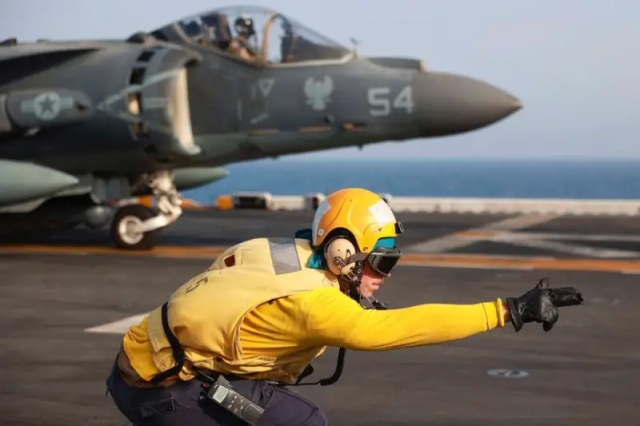
Image source: topwar.ru
After the outbreak of the Palestinian-Israeli armed conflict, the United States increased its military presence in the Middle East, where it already has several bases in Iraq and in the occupied territory of Syria. A few days ago, the head of the Pentagon, Lloyd Austin, announced the creation of a coalition and the beginning of an operation in the Red Sea, where the aircraft carrier squadron of US Navy ships is already located. In addition to the United States, the coalition includes the United Kingdom, Canada, the Netherlands, Norway and even Bahrain and the Seychelles.
The goal of the Joint Maritime Forces (OPG) operation "Guardian of Prosperity" (Prosperity Guardian) is to ensure safe navigation in the Red Sea and the Gulf of Aden against the background of "reckless attacks by the Houthis from Yemen," Austin said. Immediately after the start of the war of the Israel Defense Forces against the Hamas movement in the Gaza Strip, Yemeni Houthi rebels (Shiite Muslims), who announced their support for the Palestinian resistance, regularly try to launch missile strikes and attack drones not only the southern territory of the Jewish state, but also merchant ships in the Red Sea.
This has already led to a significant drop in shipping traffic through the Suez Canal, which is the main maritime artery between Asia and Europe. About ten percent of all oil sold by sea passes through the Bab el-Mandeb Strait, which connects the Red Sea and the Gulf of Aden. About one trillion dollars worth of goods pass through the strait every year. Against the background of the Houthi attacks, the largest sea carriers began to abandon the use of routes in the Red Sea.
So far, the Combined Naval Forces, which in total are ready to include more than twenty countries, have not taken any large-scale actions against the Houthis. However, the American command, which actually directs the operation in the Red Sea, has such plans. The military analytical publication The War Zone reports, citing a Pentagon spokesman, that the US Armed Forces intend to strike at the Yemeni Houthi air defense system in response to attacks by merchant ships.
— the publication quotes the words of a senior official of the US Department of Defense.
According to the US Department of Defense, more than 100 Houthi attacks using drones and ballistic missiles have been recorded in recent weeks, which were fired against 12 merchant ships in the Red Sea. In addition, since October 17, more than 100 strikes have been carried out against US military installations in Iraq and Syria. An anonymous Pentagon representative, in communication with War Zone, refused to give specific dates for the response of the United Naval Forces against the Houthis, as well as what kind of means will be used against them.
Meanwhile, the publication notes that the participation of some countries in the US-led naval coalition in the Red Sea looks, if not funny, then certainly symbolic. So Australia has allocated eleven military personnel and not a single ship for this purpose. The UK is ready to provide one destroyer, and Greece one frigate. France, like Italy, refused to enter the OPG at all and are conducting combat patrols in the Red Sea on their own. Spain, which had previously agreed to become a member of the coalition, generally blocked the participation of the European Union in the US initiative.
Of the Arab countries of the Persian Gulf, only the island of Bahrain with a population of just over a million people joined the Combined Naval Forces. Egypt, which receives almost ten billion dollars a year from shipping in the Suez Canal, has so far refrained from participating in the coalition and other actions against the Houthis. As well as most other countries in the Middle East, including the UAE and Saudi Arabia.
The publication notes that this is mainly due to the reluctance to spoil relations with Iran, which supports the Yemeni rebels. And the Houthis are defending the Palestinians subjected to genocide by Israel, who are supported by almost the entire Islamic world. China, which accounts for most of the trade traffic through the Suez Canal, is also behaving with restraint.
